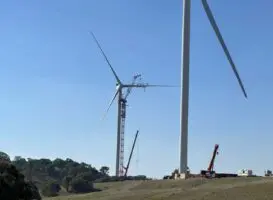 Coal has been a lynchpin of the global energy system since the industrial revolution. With the boom of China since 2000, it has undergone a renaissance over the past decade. Yet coal is the dirtiest fossil fuel. It is responsible for the lion’s share of global carbon dioxide emissions, and contributes to the dire health effects of local air pollution that plague much of the developing world in particular.
Coal has been a lynchpin of the global energy system since the industrial revolution. With the boom of China since 2000, it has undergone a renaissance over the past decade. Yet coal is the dirtiest fossil fuel. It is responsible for the lion’s share of global carbon dioxide emissions, and contributes to the dire health effects of local air pollution that plague much of the developing world in particular.
With this tension in mind, what is the future of coal?
So far, more than 150 countries have submitted their commitments to action against climate change, as part of the negotiations towards a new climate agreement to be sealed in Paris at the end of this year.
A new report by a consortium of 14 leading research institutions from Europe, the US, Japan, China, India, and Brazil has investigated future energy sector trends globally and in major economies. These trends result from the climate commitments, but also from other drivers such as economic development and local air pollution.
It paints a bleak picture for the future of global coal demand.
In China, coal demand is projected to peak by 2020, and fall back to 2010 levels by 2030. This is driven in part by industrial restructuring, as China progressively shifts from an economic model based on industry and investment to domestic consumption and services.
With the industrial sector responsible for 61% of Chinese coal demand, this emerging economic shift will have an undeniable impact on the sector. Another major driver is the shift to clean energy, notably in the power and industry sectors. Coal demand already fell 3% in 2014, compared to 2013 levels.
Japan, the US and the European Union are responsible for about 14% of global coal demand (more than India today). The report projects a decline by 55% between 2010 and 2030, notably as Europe shifts to renewables and the US to natural gas and renewables. In Japan, the restart of nuclear and the growth of renewables sees coal drop 26% by 2030 compared to 2010; stringent energy efficiency policies are projected to shave 8% of total Japanese energy demand.
The report provides a detailed estimate, based on an analysis of planned power and coal production capacities, of coal imports in India over the next 5-10 years. The Indian climate pledge envisages fast economic growth and a consequent growth in energy usage, coupled with a strong push on renewables.
In 2030, non-fossil fuel capacity is projected to reach 40% of installed capacity in the electricity sector. The report finds that India’s coal imports will reach a level of about 200 million tons (Mt) by around 2020, increasing from today’s level of 168 Mt. This is a net increase of 30 Mt compared to current levels, far less than the 600 Mt of slated coal export capacity in Australia.
By 2030, coal imports could reach about 315 Mt, assuming a stable import ratio. This potential import increase is smaller however than the decline in imports from the EU and Japan resulting from the demand drop noted above. Projections of net coal imports in India are uncertain, and the government has announced ambitious plans to end imports of coal in the next few years by increasing domestic production. Rather than cut-and-dried policy commitments, these should be taken as headline policy orientations: reduce energy dependency by promoting energy system diversification and increasing domestic production.
Two things appear clear, however. Firstly, even if India were to increase its import capacity, this would occur in the context of shrinking demand elsewhere – more on this below. Secondly, India’s ambitious renewables plans contribute to limiting future coal demand, as non-fossil fuel capacity in India’s growing electricity capacity grows from 29% today to 40% in 2030.
The report also estimates global coal demand by 2030, taking into account the climate commitments that countries have put forward. It estimates an absolute drop in coal demand of 5% by 2030 from 2012 levels. A similar result is found by the International Energy Agency (IEA) in its analysis of energy sector trends and major economies’ climate commitments: “World demand for coal shows signs of reaching a plateau by around 2020”.
The world economy is reaching the end of a super-cycle, and many economic sectors are showing signs of overcapacity. We can expect several years, maybe more, of low demand relative to supply in many commodity markets. Australia, as a major commodity exporter, is feeling the brunt of this.
With China in the midst of slowdown and restructuring, emerging markets slowing, and alternative energy policies gaining increasing prominence, the risks seem stacked on the downside for the coming years for the global coal market. In this context, a race to establish new production capacities may amount to self-harm on the part of sector still running high on the fumes of the boom years.
Thomas Spencer is the Program Director Energy and Climate.








